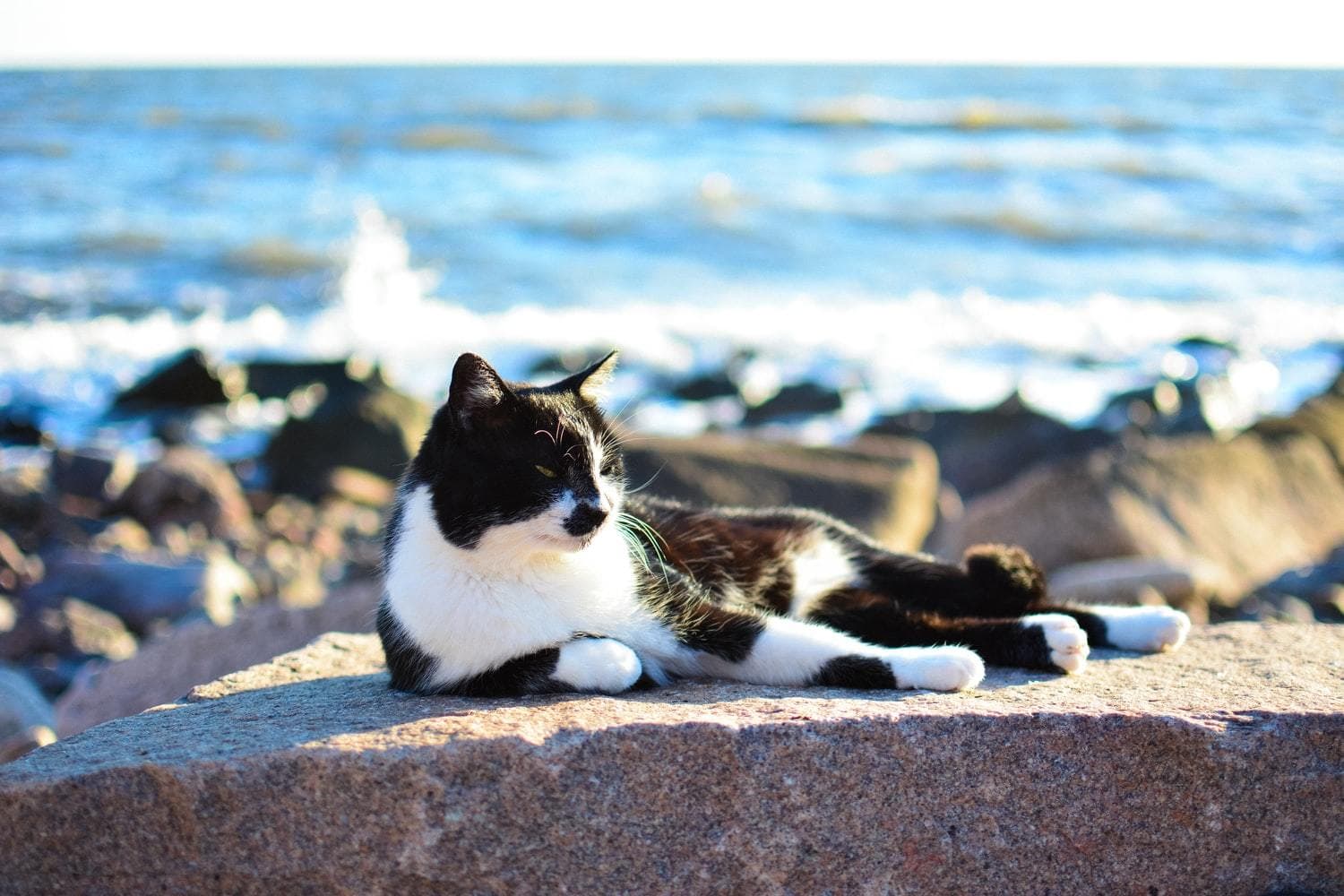Feline Myotonia Congenita (MC) is a hereditary neuromuscular disorder characterized by persistent contraction (or delayed relaxation of muscles), particularly during the muscle movement. The word myotonia derives from the Greek word "myo" for muscle and Latin word "tonus" for tension. This disease is caused by an autosomal recessive point mutation and it is not breed-specific. Other than cats, the disease has been described in humans, dogs, horses, goats, mice and water buffalos too.
General overview and causes
Myotonia Congenita (MC) is an extremely rare hereditary neuromuscular disorder affecting skeletal muscles in domestic cats. This condition is classified as channelopathy. Channelopathies are diseases caused by abnormal function of ion channel subunits or enzymes regulating them. The ion channels affected in this disorder are the voltage-dependent chloride (Cl-) channels.
These channels are transmembrane proteins (proteins which span the entirety of the cell membrane) and they are crucial for the functioning of skeletal muscle cells. When there is an insufficiency in the functioning of these channels, the muscle fiber membrane becomes hyper-excitable and post-stimulus remains electrically active longer than a healthy muscle fiber.
Ions carry a small charge (i.e. chloride ions carry a negative charge (Cl-)). By moving across the membrane, they alter the balance of charge across it. This balance of charge is what helps muscle contract and relax. During the muscle contraction, there is a high negative charge across the membrane and a high positive charge inside the muscle cell.
In order to restore the balance of the charge across the membrane and relax the muscle, the chloride channels import the negatively-charged chloride ions into the cell. However, when these channels are malfunctioning, they are slow to import the chloride ions inside the cells and this leads to the delayed muscle relaxation and prolonged muscle contraction.

The identified cause for MC is the autosomal recessive point mutation in the CLCN1 gene. Interestingly, the same mutation in the same gene has been identified in all other animals known to be affected too. This mutation leads to the production of a truncated malfunctional protein product which results in malfunctioning chloride channels.
The mutation is inherited in an autosomal recessive mode, meaning that a cat must inherit two mutated copies of the gene (alleles), one from each of the parent, in order to be affected by the disorder. Cats who carry only one mutated allele and one healthy allele remain silent carriers (they can pass on the trait to the offspring but aren't affected themselves). If two silent carriers cross, there is a 25% chance for each kitten to be affected. Two affected cats give only affected offspring.
Symptoms and diagnosis
Typical signs of MC include the prolonged muscle contraction, muscle stiffness, difficulty breathing, rising or moving, dysphagia (difficulty swallowing), regurgitation, protruded tongue and voice change. Respiratory issues occur due to stiffness in the esophagus and is one of the common and more serious complications of the diseases.
Restricted jaw opening, gingivitis, bad breath and excessive drooling can also be observed in the affected cats. Hypertrophy, an increase size of skeletal muscle, is present along the cervical spine. Due to dystrophin deficiency, the levels of creatine kinase enzymes as well as liver enzymes are elevated. These kitties often show poor grooming habits too. The mental activity, and the functioning of smooth and cardiac muscles remain intact.

For the diagnosis of MC, veterinarians firstly ask for detailed history of the patient's health and the diary of the symptoms. After the complete physical examination, they conduct a complete biochemistry profile, urinalysis and complete blood count (CBC) for the confirmation of the diagnosis.
Prognosis and treatment
Unfortunately, the overall prognosis for cats affected by MC is poor. There are no specific treatments for the condition, and only symptoms can be addressed with certain medications. I.e., procainamide, quinidine, phenytoin and mexiletine are all medications that are being used to control the muscular stiffness and regurgitation. Sadly, other than the efforts to control the symptoms, no effective treatments have been found for this disorder yet.
Prevention
It is not recommended to breed the affected cat as to prevent the progression of the condition to the offspring. In order to identify the carriers too, a genetic test is now available for the detection of the mutation. Affected cats and identified carriers should be excluded from the breeding pool through spay and neuter.
Living with Feline Myotonia Congenita
Cats suffering from MC should be discouraged from excessive exercise or physical activity as it increases their respiration. This is particularly important as respiratory failure is a common complication of the condition. They should also be kept away from the cold. Practical measurements which ease the access to the food, water, litter box and beddings are all recommended too. Always keep a close eye on the affected cats and take them for regular vet check-ups. Other than the treatment of symptoms and efforts to keep them safe and comfortable, there is sadly not much that can be done for the MC feline patience.

Myotonia congenita is a rare hereditary disorder with an unknown effective treatment. Caused by the point mutation in the CLCN1 gene, this is a channelopathy which leads to the delay of relaxation of skeletal muscles. It is important not to breed affected cats nor carriers to prevent the progression of the disorder to the offspring. This is currently the only preventative measurement which can be used with the help of genetic testing and spay/neuter.
Further reading
1. Gandolfi B, Daniel RJ, O’Brien DP, Guo LT, Youngs MD, et al. (2014) A Novel Mutation in CLCN1 associated with Feline Myotonia Congenita. PloS ONE 9(10): e109926. doi:10.1371/journal.pone.0109926.
2. Feline Myotonia Congenita (MC) by Inovagen
3. Myotonia Congenita by Vetstream
4. Non-Inflammatory Hereditary Muscle Disease in Cats by PetMD



